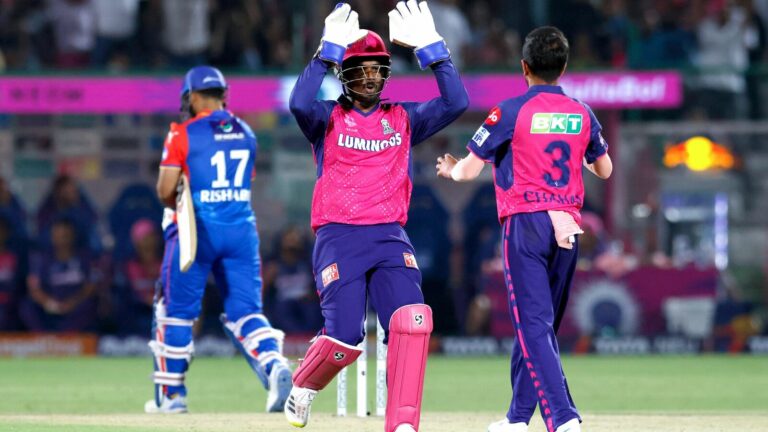The Impact of Captains on Team Performance in Cricket
Lotus365, Gold365: Successful team performance in cricket is influenced by a variety of key factors. One crucial element is the individual skill level of each player within the team. The collective abilities of the players, such as batting, bowling, and fielding skills, contribute significantly to the overall performance on the field.
Another important factor is effective teamwork and communication among team members. Clear communication, mutual understanding, and coordination between players are essential for performing well as a unit. Team chemistry and the ability to work together seamlessly can often make the difference between victory and defeat in cricket matches.
The Role of a Captain in Cricket Team Dynamics
Captains play a pivotal role in shaping the dynamics of a cricket team. Their leadership qualities, strategic acumen, and ability to inspire and motivate players are essential for team success. A captain’s on-field decisions, communication with teammates, and management of player egos all contribute to the overall cohesion and performance of the team.
In addition to leading by example through their own performance, captains are responsible for setting the tone for the team both on and off the field. Their ability to handle pressure situations, make quick and decisive decisions, and maintain a positive team environment can significantly impact the team’s overall performance and success. A captain’s role extends beyond just being a player on the field – they are the face of the team and a key figure in driving the team towards achieving its goals.
Strategies Implemented by Captains to Improve Team Performance
Captains play a crucial role in implementing strategies to enhance team performance in cricket. One common strategy is setting clear goals and objectives for the team, focusing on both short-term wins and long-term success. Communicating these goals effectively to the players helps in aligning their efforts towards a common purpose, fostering unity and motivation within the team.
Another effective strategy implemented by captains is creating a positive team culture that promotes trust, respect, and camaraderie among players. Encouraging open communication and fostering a supportive environment where players feel valued and heard can significantly boost team morale and performance. Additionally, captains often lead by example, demonstrating qualities such as hard work, determination, and resilience, inspiring their team members to give their best on the field.
Communication Skills of Captains in Influencing Team Performance
Effective communication is a vital skill for captains in cricket as it sets the tone for team dynamics and performance. Captains who can clearly convey their strategies, motivations, and expectations to their team members tend to foster a sense of unity and direction within the group. By maintaining open lines of communication, captains can ensure that every player understands their role and responsibilities, leading to improved coordination and overall performance on the field.
Moreover, the ability of a captain to provide constructive feedback and encourage open dialogue among team members can significantly impact the team’s morale and confidence. When captains communicate in a positive and motivating manner, players are more likely to feel valued and supported, which can enhance their commitment to the team’s objectives. Strong communication skills allow captains to address challenges and conflicts effectively, fostering a cohesive and resilient team that can overcome obstacles together.
Decision-making Abilities of Captains in Crucial Situations
Cricket is a game of split-second decisions that can often determine the outcome of a match. In crucial situations, the role of the captain becomes paramount as they are tasked with making quick and strategic decisions under immense pressure. Captains who possess strong decision-making abilities are able to analyze the game situation effectively and make bold choices that can sway the momentum in their team’s favor.
The ability of a captain to make critical decisions in high-pressure moments can be the difference between victory and defeat. Captains who exhibit confidence in their decision-making process inspire trust and belief in their team members, creating a positive environment where players can execute their roles with clarity and focus. Effective captains understand the significance of their choices in crucial situations and have the composure to make decisions that align with the team’s overall strategy and goals.
Leadership Styles Adopted by Successful Cricket Captains
Successful cricket captains showcase a diverse range of leadership styles that contribute to their team’s victories on the field. Some captains are known for their authoritative approach, instilling discipline and accountability within the team. These leaders set high standards for themselves and expect nothing less from their teammates, often leading by example through their work ethic and commitment.
On the other hand, there are captains who adopt a more democratic leadership style, valuing input from all team members and making decisions collectively. These leaders foster a sense of camaraderie and mutual respect among the players, creating a cohesive unit that works together towards a common goal. By empowering their team members and encouraging open communication, these captains build a strong foundation for success on the cricket pitch.
The Influence of Captains on Player Morale and Confidence
In the dynamic realm of cricket, captains play a pivotal role in shaping the morale and confidence of their team members. The demeanor and actions of a captain can have a profound impact on how players perceive themselves and their abilities on the field. A captain who exudes positivity, encouragement, and unwavering support can uplift the spirits of the entire team, fostering a sense of unity and belief in their collective capabilities.
Moreover, a captain’s ability to instill confidence in individual players during challenging moments can significantly influence the team’s overall performance. By offering guidance, praise, and constructive feedback, captains can boost the self-assurance of their team members, empowering them to overcome obstacles and excel in high-pressure situations. When players feel valued and supported by their captain, they are more likely to display resilience, determination, and composure on the field, ultimately contributing to the team’s success.
Captaincy and Its Impact on Team Cohesion and Unity
Effective captaincy plays a crucial role in fostering team cohesion and unity within a cricket team. A captain who leads by example, demonstrates a strong work ethic, and communicates effectively can significantly influence the overall dynamics of the team. When players trust and respect their captain, it creates a sense of unity and shared purpose, leading to improved collaboration and performance on the field.
Team cohesion is essential for a cricket team to function cohesively and perform at its best. A captain who promotes a positive team environment, encourages open communication, and resolves conflicts constructively can help create a strong bond among team members. By instilling a sense of unity and shared goals, the captain can inspire players to work together towards a common objective, ultimately enhancing team cohesion and unity.
The Relationship Between Captains and Coaches in Enhancing Team Performance
Successful cricket teams are often characterized by a strong bond between the captain and the coach. The relationship between these two key figures in the team can have a significant impact on the overall performance of the players. While the captain is responsible for on-field strategies and decision-making, the coach plays a crucial role in guiding the team through training sessions and providing valuable insights and feedback.
Effective communication between the captain and the coach is essential for ensuring that the team is working towards a common goal. Clear lines of communication help in aligning the team’s strategy and tactics, as well as in addressing any issues or concerns that may arise. When the captain and coach are able to work together harmoniously, they can create a positive environment that fosters teamwork, motivation, and ultimately, enhanced team performance.
Case Studies of Notable Captains and Their Impact on Team Success
In the realm of cricket, the role of a captain holds immense importance in shaping team success. One notable example is the legendary Indian cricketer, MS Dhoni. As captain, Dhoni led the Indian cricket team to numerous victories, including the 2007 ICC World Twenty20 and the 2011 ICC Cricket World Cup. His calm demeanor under pressure, strategic thinking, and ability to motivate his team members played a pivotal role in the team’s success.
Another standout captain in cricket history is Ricky Ponting from Australia. Ponting’s aggressive leadership style and tactical acumen guided the Australian team to multiple victories, including the 2003 and 2007 ICC Cricket World Cups. His strong decision-making abilities and exceptional cricketing knowledge not only inspired his team but also instilled a winning mentality that propelled them to the top of the cricketing world.
How important is the role of a captain in a cricket team?
The role of a captain in a cricket team is crucial as they are responsible for strategizing, making decisions, and leading the team both on and off the field.
What are some key factors that influence team performance in cricket?
Some key factors that influence team performance in cricket include player skills and abilities, teamwork, communication, leadership, and the strategic decisions made by the captain.
How do captains improve team performance through communication skills?
Captains improve team performance through effective communication by providing clear instructions, motivating players, and maintaining open lines of communication within the team.
How do successful captains make decisions in crucial situations?
Successful captains make decisions in crucial situations by staying calm under pressure, analyzing the situation carefully, and relying on their experience and knowledge of the game.
What are some common leadership styles adopted by successful cricket captains?
Some common leadership styles adopted by successful cricket captains include transformational leadership, democratic leadership, and situational leadership, depending on the team dynamics and the situation.
How do captains influence player morale and confidence?
Captains influence player morale and confidence by providing encouragement, support, and feedback to players, and by leading by example with their own performance and attitude.
How does captaincy impact team cohesion and unity?
Captaincy impacts team cohesion and unity by fostering a sense of teamwork, camaraderie, and shared goals among players, creating a strong bond within the team.
What is the relationship between captains and coaches in enhancing team performance?
The relationship between captains and coaches is important in enhancing team performance as they work together to develop strategies, analyze opponents, and provide guidance and support to the team.







